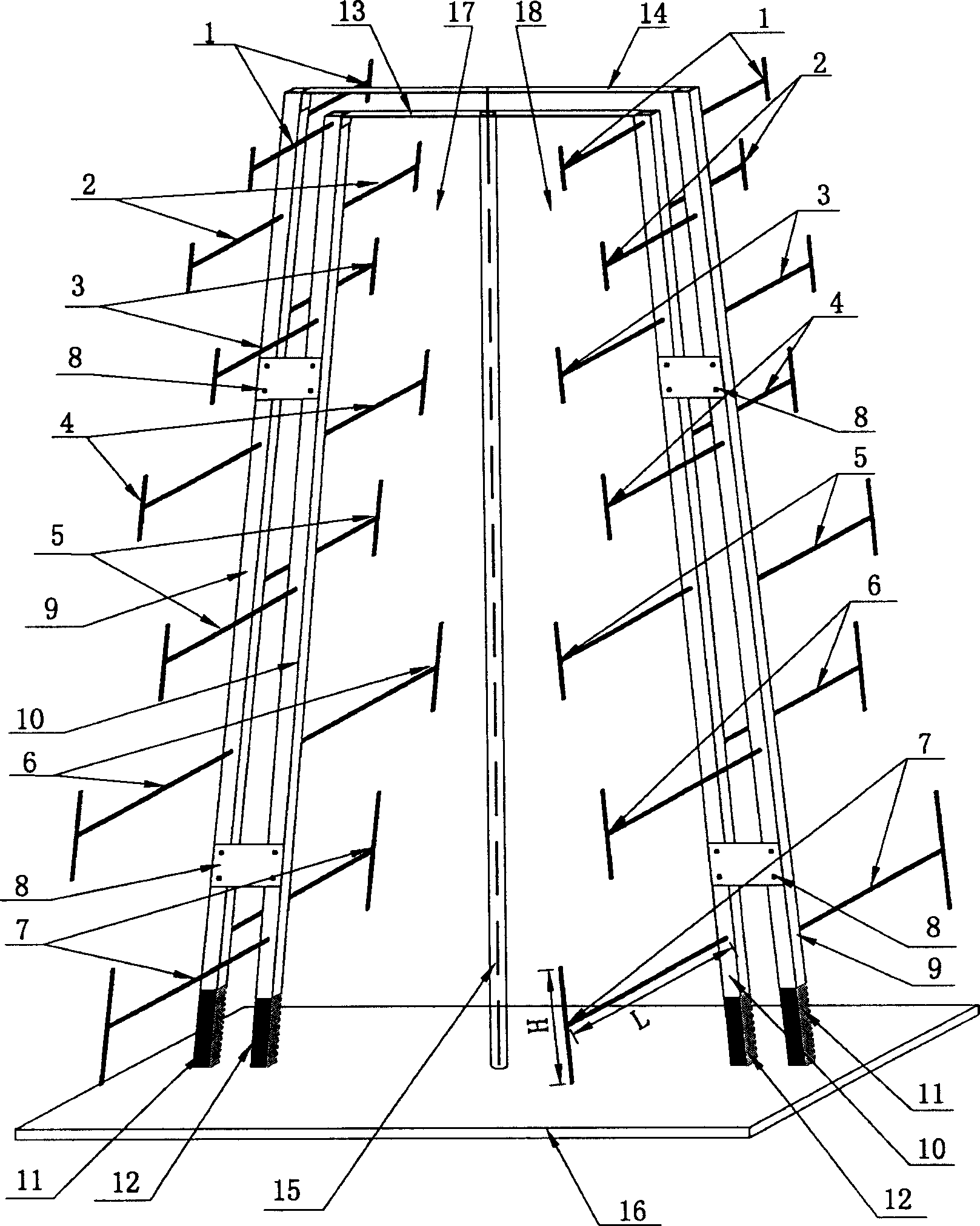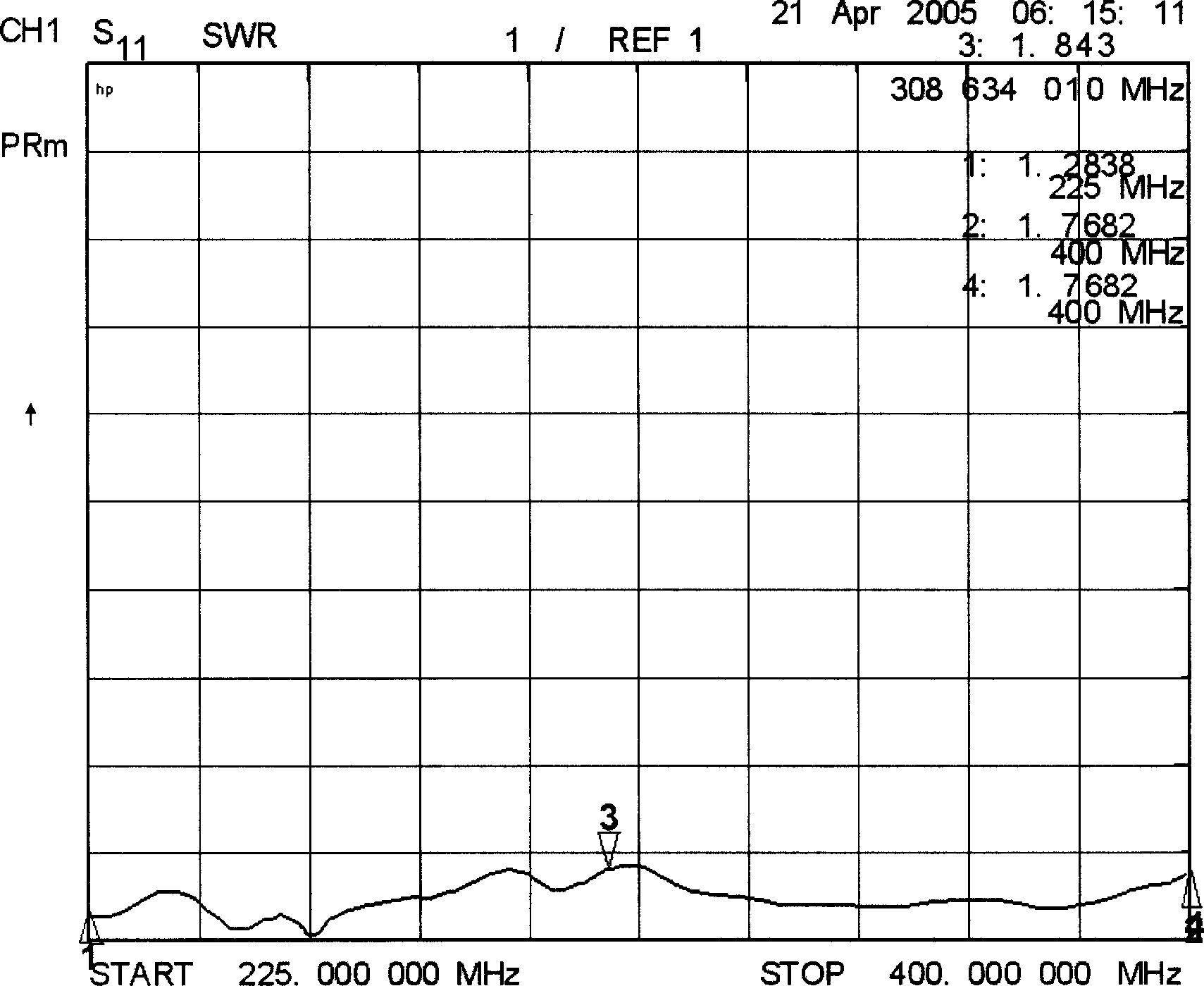Superhigh frequency/very high frequency high-gain, broadband directive antenna
A directional antenna, very high frequency technology, applied in the direction of antenna, antenna array, non-resonant long antenna, etc., can solve the problems of low gain, large lateral size of antenna, narrow frequency band, etc., and achieve the effect of wide application value and high gain
- Summary
- Abstract
- Description
- Claims
- Application Information
AI Technical Summary
Problems solved by technology
Method used
Image
Examples
Embodiment Construction
[0027] Reference figure 1 , It is a schematic diagram of the structure of the present invention. The antenna includes a metal ground plate 16, metal connecting strips 13, 14, a hard coaxial cable 15 and two identical T-shaped vibrator-type log periodic antennas 17 and 18. The two identical T-shaped dipole-type log-period antennas 17 and 18 keep the dipoles of the two element antennas parallel, and reduce the distance between the short dipole end of the two element antennas and the long dipole end. The distance between the persons increases, and they are arranged to form a cone-shaped 2-element array structure. The cone-shaped 2-element array structure is installed on the metal ground plate 16, and its upper end is connected with metal connecting bars 13 and 14, and a hard coaxial cable 15 is used to feed signals. The inner conductor of the hard coaxial cable 15 is connected to the metal connecting bar 14. , The outer conductor is connected to the metal connecting strip 13. Two id...
PUM
 Login to View More
Login to View More Abstract
Description
Claims
Application Information
 Login to View More
Login to View More - R&D
- Intellectual Property
- Life Sciences
- Materials
- Tech Scout
- Unparalleled Data Quality
- Higher Quality Content
- 60% Fewer Hallucinations
Browse by: Latest US Patents, China's latest patents, Technical Efficacy Thesaurus, Application Domain, Technology Topic, Popular Technical Reports.
© 2025 PatSnap. All rights reserved.Legal|Privacy policy|Modern Slavery Act Transparency Statement|Sitemap|About US| Contact US: help@patsnap.com



